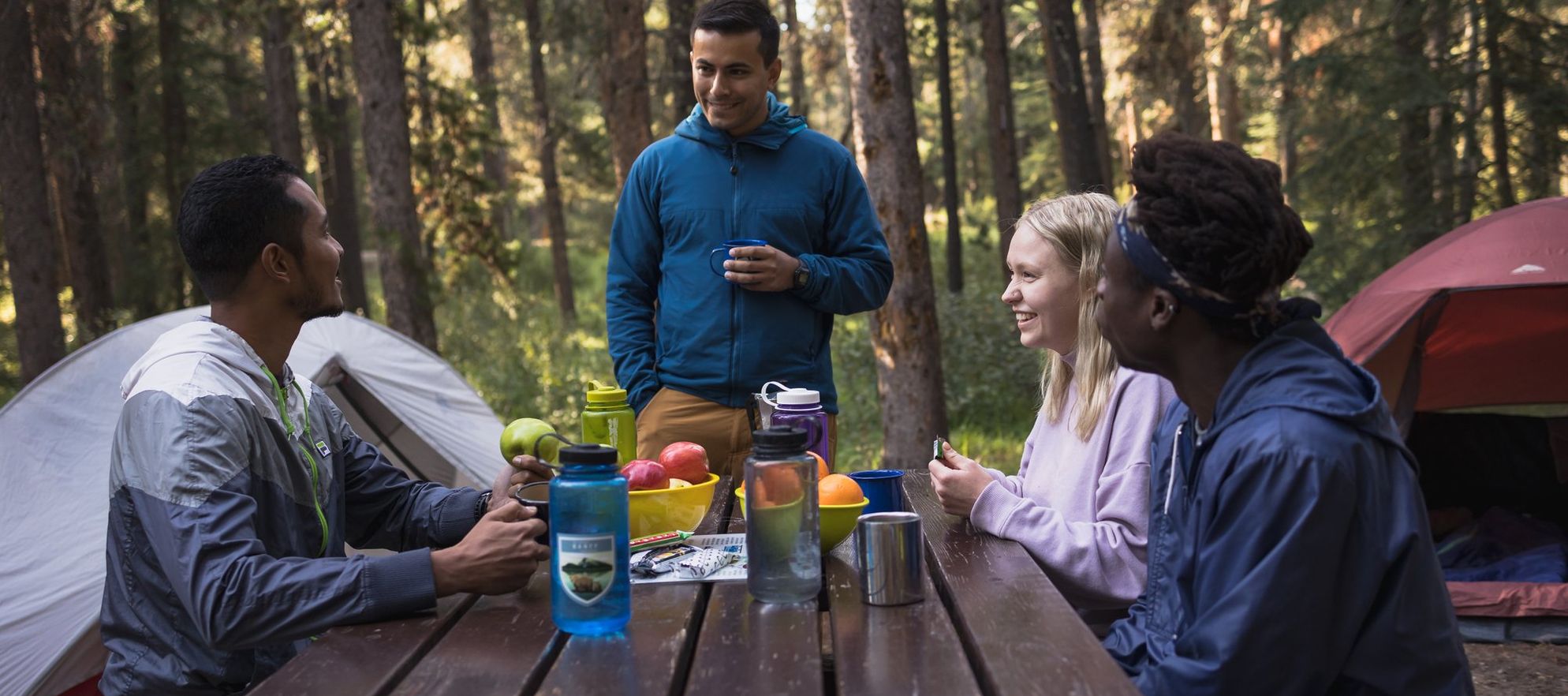Your Guide to Camping in Banff National Park

Banff National Park comes alive in the summer. The rush of the Bow River, chirps of the birds, and sounds of critters scurrying through the landscape become the chorus of the summer months. The lakes are a vivid turquoise and wildflowers burst from the ground in a rainbow of colours.
Camping is an amazing way to soak in all the beauty Banff National Park has to offer.
Here’s the Lowdown
Camping means different things to different people, and the options Banff National Park has to offer reflect this.
Frontcountry - These campsites are accessible by car. Most often, you drive right to your site and can set up camp right beside your car.
Backcountry - These campsites are not accessible by car, which means you have to hike to your campground and you’re limited to what can fit on your back.
Want to try it for yourself?
Frontcountry picks
You don’t have to leave the Banff townsite to camp. The Tunnel Mountain Village campgrounds boast a sweeping view from the top of Tunnel Mountain. Reservations are available on Parks Canada’s website for May 12 to October 3, 2022.
15 minutes from downtown Banff, Two Jack Main and Two Jack Lakeside are campsites on the scenic Minnewanka Loop. Both offer a location that feels slightly remote, but close enough to enjoy the amenities available in Banff. Reservations are available for these campgrounds.
Outside the Banff townsite, you can also find the Johnston Canyon Campground along the Bow Valley Parkway. This campground is a good option for a more rustic and authentic camping experience. It also provides access to a number of unique attractions, including Johnston Canyon and the Ink Pots.
The Lake Louise Campground lies in the heart of Banff National Park, close to a multitude of trails and attractions, including world-famous Lake Louise and Moraine Lake. It is also a short drive to access the Icefields Parkway – one of the most scenic drives in the world!
Take a drive up the Icefields Parkway to Waterfowl Lakes Campground. This secluded spot is about an hour north of Lake Louise and is available on a first-come, first-served basis from June 23 to September 11, 2022.
Tip: Camping spots around Banff and Lake Louise are high in demand. Booking early is highly recommended to secure a location.
Remember: Even though you are in the frontcountry, Banff National Park’s wildlife will travel through. Ensure you have a bare campsite. Do not leave food or garbage unattended at your campsite -- this includes leaving your cooler and other food bins in your car.
Try an oTENTik
Looking for a rustic experience, but a tent is not the right fit for you? Try Parks Canada’s oTENTiks: prospector-style, A-frame tents on a raised wooden floor. In Banff National Park, oTENTiks are available at Two Jack Lakeside Campground and Tunnel Mountain Village II Campground.
Venture into the Backcountry
As you venture into the wilderness of backcountry camping, you'll see scenery not seen by most. There are some helpful safety tips to keep in mind as you enter bear country. Ensure you make your presence heard on the trail by shouting out “hey bear”, clapping loudly, or singing out loud (as a courtesy, don’t play music from a speaker). To be on the safe side, have your bear spray ready and accessible. Never abandon your food or garbage, and always secure food in bear-safe bins or hangers offered at each backcountry campground. Most importantly for backcountry is to ensure you plan ahead and seek advice if needed from Parks Canada.
For a two-day backpacking adventure, head up the Icefields Parkway (Highway 93 North) to Glacier Lake. At about 9 km (5.6 miles) to the backcountry site (G19), this is a great option for an overnight stay.
If you’re looking to stay a little longer in the backcountry, book the stunning Egypt Lake. This route is accessible at the Sunshine Village ski area parking lot. Book a spot at campsite E13 for two nights and spend a day exploring the area, or make it a longer trip and hike through to Ball Pass Junction (Re21) on night two, and Twin Lakes (Tw7) for night three.
Booking Your Site
Book your backpacking adventure online. Frontcountry and backcountry camping fees vary depending on location and type of campsite. Learn more about frontcountry and backcountry camping with Parks Canada.
Gear rentals
Don’t let the gear get in the way of your adventure! If you want to camp but don’t have the right stuff, do not worry: Snowtips-Bactrax offers a wide variety of camping kits. From frontcountry to backcountry, rent everything from a tent to a backpack.